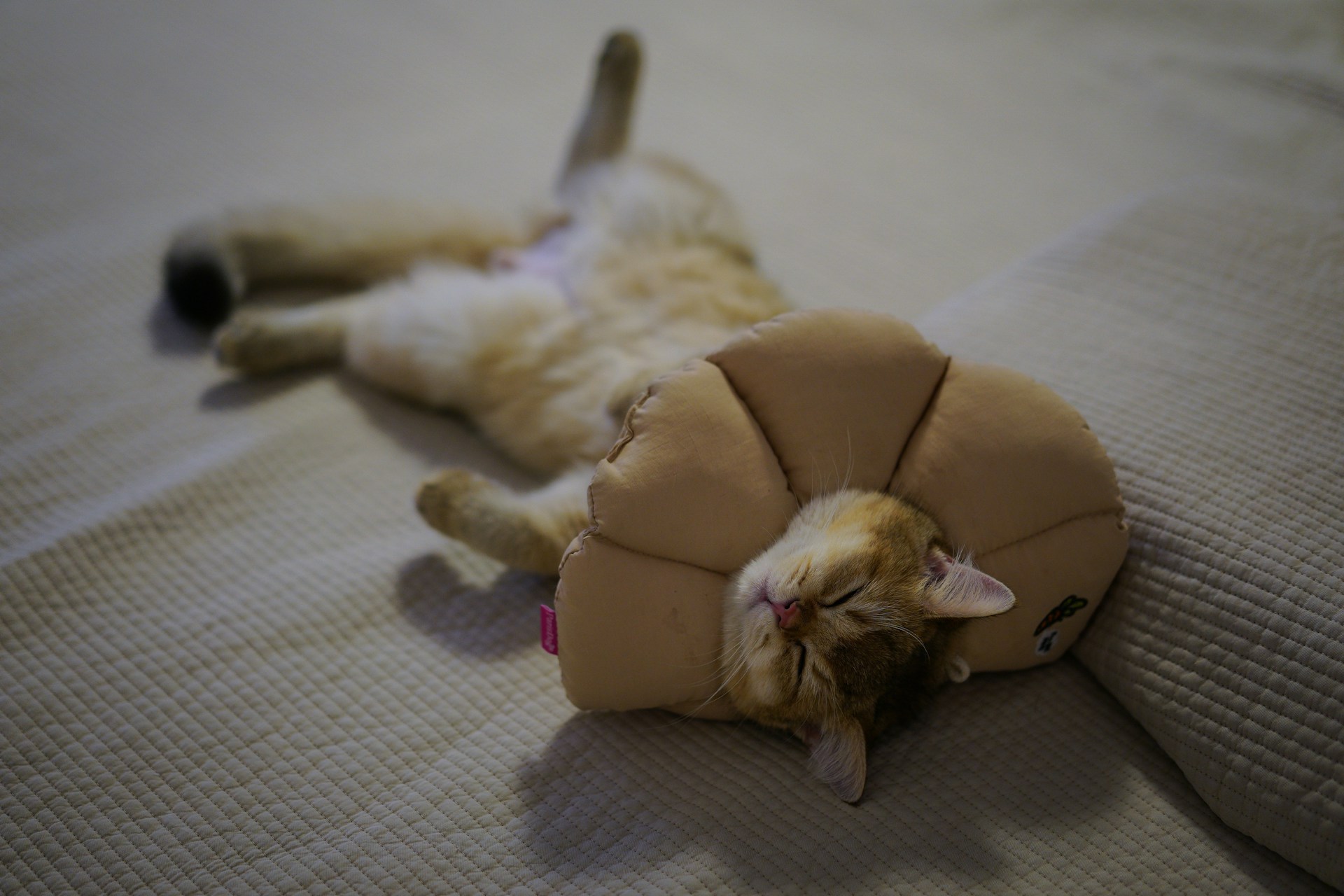Why Vet Visits Stress Cats
Vet visits can be daunting for cats, triggering anxiety due to unfamiliar environments and handling. The car ride, strange smells, and other animals at the clinic can overwhelm them. Common stress signs include yowling, hiding in the carrier, or aggression. At Friends With Tail, we’re here to share feline anxiety solutions to make vet trips easier for you and your cat.
Cats are territorial and sensitive to change, so leaving their home disrupts their sense of security. Being poked or prodded by a vet, even gently, adds to their stress. Some cats associate carriers with negative experiences, making the journey tense from the start. Understanding these triggers helps you prepare your cat for a calmer visit, improving their health and your peace of mind.
Preparing Your Cat for the Vet
Preparation starts at home to reduce stress before the visit. Here’s how:
- Familiarize the Carrier: Leave the carrier out days or weeks before the visit. Place treats or a cozy blanket inside to make it inviting.
- Practice Car Rides: Take your cat on short, non-vet car trips, rewarding them with treats to create positive associations.
- Schedule Wisely: Book appointments during quiet clinic times, like early mornings, to minimize waiting and exposure to other animals.
- Use Pheromones: Spray the carrier with feline pheromone spray 15 minutes before travel to mimic calming scents.
- Keep Calm: Stay relaxed when preparing. Cats sense your anxiety, so act as if the visit is routine.
Early preparation turns the carrier and car into familiar, less scary experiences, setting the stage for a smoother vet visit.
Calming Techniques During Visits
During the vet visit, calming techniques can keep your cat relaxed. Try these:
- Stay with Your Cat: If allowed, stay in the exam room to provide comfort. Speak softly or pet gently to reassure them.
- Cover the Carrier: Drape a light towel over the carrier to reduce visual stimuli, leaving one side open for air.
- Bring Familiar Items: Include a blanket or toy with your scent in the carrier for familiarity and comfort.
- Request Gentle Handling: Ask the vet to move slowly and handle your cat minimally to avoid overwhelming them.
- Offer Treats: If your cat is food-motivated, give treats during calm moments to reinforce positive behavior.
These techniques create a sense of safety, helping your cat stay calm during the exam. Communicate with the vet team about your cat’s needs for the best experience.
Using Carriers Effectively
A good carrier experience is crucial for reducing vet anxiety. Here’s how to use one effectively:
- Choose the Right Carrier: Pick a hard-sided carrier with a removable top for easy vet access. Ensure it’s spacious but secure.
- Make It Cozy: Line the carrier with a soft blanket or pad. Avoid loose items that could shift during travel.
- Practice Loading: Train your cat to enter the carrier willingly by luring them with treats or toys. Reward entry to build trust.
- Secure in the Car: Place the carrier on the floor or buckle it on a seat to prevent sliding. Cover it partially to reduce motion stress.
- Keep It Clean: Wash the carrier after visits to remove clinic smells, keeping it neutral for next time.
A positive carrier experience lowers stress from the start, making vet trips smoother. For more cat health tips, visit Friends With Tail.
Post-Visit Stress Relief
After the vet, your cat may need help unwinding. Here’s how to provide relief:
- Offer a Quiet Space: Let your cat retreat to a familiar, calm area like their bed or a safe room to decompress.
- Reintroduce Slowly: In multi-pet homes, reintroduce your cat gradually to avoid tension from vet smells. Rub them with a shared blanket first.
- Provide Comfort: Offer treats, gentle petting, or playtime if your cat seems receptive. Respect their need for space if they’re withdrawn.
- Monitor Behavior: Watch for lingering stress, like hiding or reduced appetite, over a few days. Contact the vet if concerns arise.
- Reinforce Positivity: Place treats in the carrier post-visit to maintain its positive association for future trips.
Post-visit care helps your cat recover quickly, ensuring vet trips don’t leave lasting stress.
Wrapping Up
Reducing cat anxiety during vet visits is achievable with preparation and care. Understand why these trips stress your cat, prepare them with familiar carriers, and use calming techniques to ease their nerves. Effective carrier use and post-visit relief complete the process, making vet care less daunting. With these tips, you’ll support your cat’s health and happiness. Share your vet visit strategies or questions in the comments, or explore more resources to keep your cat stress-free!

